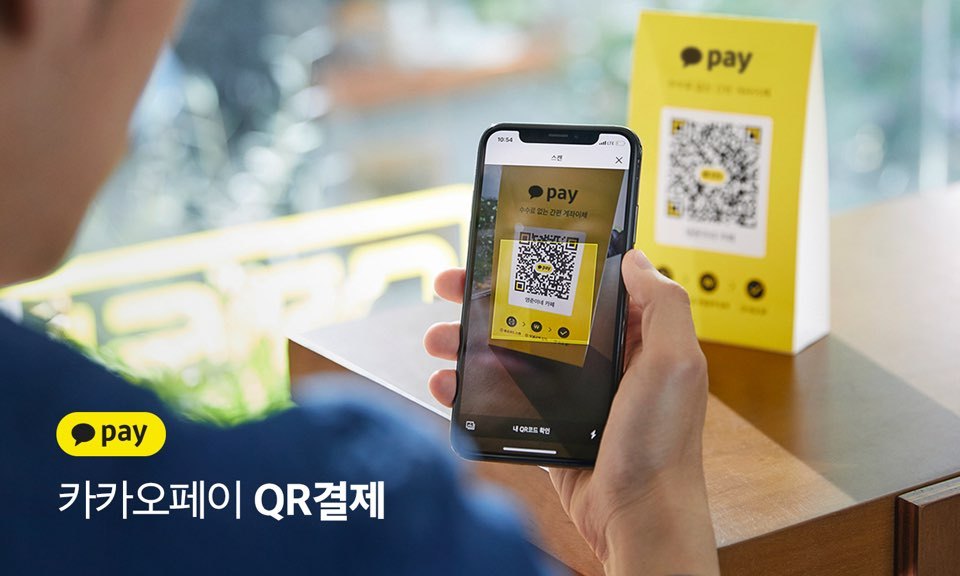Contactless payments surge 17% amid pandemic: BOK
By Jung Min-kyungPublished : Nov. 3, 2020 - 15:24

Non-face-to-face payments have surged 17 percent on-year since the outbreak of COVID-19, a report released by the central bank on Tuesday showed.
Contactless payments made via electronic devices and other noncash methods inched up by 1.4 percent on-year in the first nine months of this year, the Bank of Korea said in a report.
“Contactless payment transactions have expanded as usage of mobile payments have increased compared with actual credit or debit card payments,” the report showed.
According to the BOK, the value of all daily contactless payment transactions amounted to some 800 billion won ($703.9 million).
Offline electronic payment transactions, however, declined by 5.6 percent in the same period.
Of mobile payment transactions, the use of “simple payment services” -- which allow users to make one- or two-step payments through data saved on mobile phones -- accounted for 39 percent of such transactions in September alone. The corresponding figure stood at 32.4 percent in January 2019 and 35.1 percent in June this year.
Simple payment services operated by fintech groups held 61.5 percent of the market, apparently reflecting local consumers’ growing preference for such apps compared with those developed by traditional institutions. The corresponding figure stood at 52.6 percent in January 2019.
The e-commerce, auto and insurance saw 24.1 percent, 21.9 percent and 14.6 percent more such transactions on-year, respectively, in the January-September period. In contrast, travel, education and culture were hit hardest by the pandemic and shed 66 percent, 16.9 percent and 12.7 percent, respectively, in the same period.
Local fintech firms have been aggressively expanding their business amid the coronavirus pandemic. Naver Pay, a mobile payment service launched by leading Korean web portal Naver, recently expanded its mobile QR code payment services.
Kakao Pay, the nation’s No. 1 mobile payment service provider, is reportedly seeking an initial public offering in the first half of next year. It is currently the most popular mobile payment service platform here with 34 million users, and the value of its payments totaled 29.1 trillion won in the first half of the year. Kakao Corp. is its largest shareholder, while China’s mobile payment platform operator Alipay is the second-largest with a 43.9 percent stake.
Separate BOK data released in September showed that the value of daily money transfers via mobile payment apps here gained 20.3 percent in the first half of the year, compared with six months earlier.
The coronavirus pandemic first struck Asia’s fourth-largest economy in late January. The country had added 75 more COVID-19 cases as of Tuesday at noon, including 46 locally transmitted infections, raising the total caseload to 26,807, according to the Korea Disease Control and Prevention Agency.
By Jung Min-kyung (mkjung@heraldcorp.com)
Contactless payments made via electronic devices and other noncash methods inched up by 1.4 percent on-year in the first nine months of this year, the Bank of Korea said in a report.
“Contactless payment transactions have expanded as usage of mobile payments have increased compared with actual credit or debit card payments,” the report showed.
According to the BOK, the value of all daily contactless payment transactions amounted to some 800 billion won ($703.9 million).
Offline electronic payment transactions, however, declined by 5.6 percent in the same period.
Of mobile payment transactions, the use of “simple payment services” -- which allow users to make one- or two-step payments through data saved on mobile phones -- accounted for 39 percent of such transactions in September alone. The corresponding figure stood at 32.4 percent in January 2019 and 35.1 percent in June this year.
Simple payment services operated by fintech groups held 61.5 percent of the market, apparently reflecting local consumers’ growing preference for such apps compared with those developed by traditional institutions. The corresponding figure stood at 52.6 percent in January 2019.
The e-commerce, auto and insurance saw 24.1 percent, 21.9 percent and 14.6 percent more such transactions on-year, respectively, in the January-September period. In contrast, travel, education and culture were hit hardest by the pandemic and shed 66 percent, 16.9 percent and 12.7 percent, respectively, in the same period.
Local fintech firms have been aggressively expanding their business amid the coronavirus pandemic. Naver Pay, a mobile payment service launched by leading Korean web portal Naver, recently expanded its mobile QR code payment services.
Kakao Pay, the nation’s No. 1 mobile payment service provider, is reportedly seeking an initial public offering in the first half of next year. It is currently the most popular mobile payment service platform here with 34 million users, and the value of its payments totaled 29.1 trillion won in the first half of the year. Kakao Corp. is its largest shareholder, while China’s mobile payment platform operator Alipay is the second-largest with a 43.9 percent stake.
Separate BOK data released in September showed that the value of daily money transfers via mobile payment apps here gained 20.3 percent in the first half of the year, compared with six months earlier.
The coronavirus pandemic first struck Asia’s fourth-largest economy in late January. The country had added 75 more COVID-19 cases as of Tuesday at noon, including 46 locally transmitted infections, raising the total caseload to 26,807, according to the Korea Disease Control and Prevention Agency.
By Jung Min-kyung (mkjung@heraldcorp.com)












![[Today’s K-pop] BTS pop-up event to come to Seoul](http://res.heraldm.com/phpwas/restmb_idxmake.php?idx=644&simg=/content/image/2024/04/17/20240417050734_0.jpg&u=)





![[KH Explains] Hyundai's full hybrid edge to pay off amid slow transition to pure EVs](http://res.heraldm.com/phpwas/restmb_idxmake.php?idx=652&simg=/content/image/2024/04/18/20240418050645_0.jpg&u=20240419100350)

